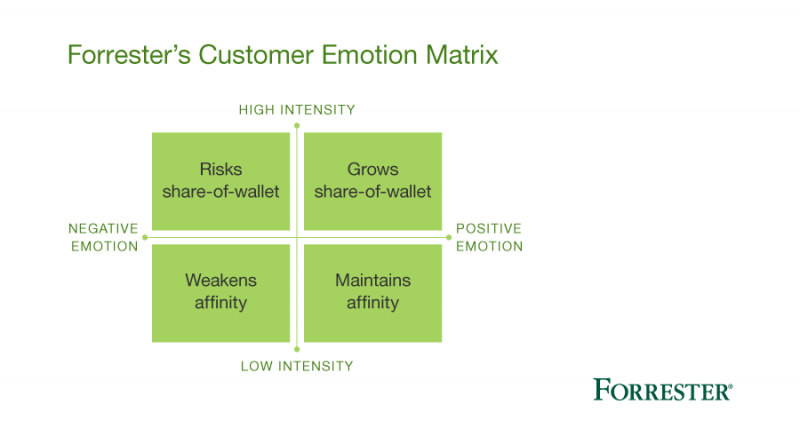A Closer Look at the Monetary Value of Emotion
Human beings are emotional. The chemical reactions that trigger emotions determine our feelings toward a brand and our likelihood to spend. This fundamental, primal relationship is baked into how humans operate; however, it is not yet baked into how most companies operate.
Initial CX efforts gave us better insights into customer journeys across digital, physical, and human touchpoints. That opened a window into what causes emotional responses and provided an early warning system for emotions that provoke actions. But we’ve only begun to uncover the profound relationship between emotion and revenue. For example:
- In the hotel industry, among customers who felt valued, 90% will advocate for the brand, 67% plan to increase their spending with the brand, and 87% plan to stay with the brand, per Forrester’s Customer Experience (CX) Index.
- According to CX Index data, the TV service provider industry had the largest percentage of customers who felt annoyed compared with any other industry in our study. The result is that just 8% will advocate for the brand, only 13% plan to increase their spending with the brand, and barely 15% plan to stay with the brand.
- Users can abandon digital sites and purchase paths within 50 milliseconds if the experience does not meet their (ever-increasing) expectations.
Let’s be clear, customers aren’t getting more emotional; it’s just that they now have the power, willingness, and ability to take action when provoked by a great or poor experience. 
The numbers are daunting. Forrester’s empowered customer research reveals that 40% of consumers (Progressive Pioneers and Savvy Seekers) have a high willingness and ability to shift spend rapidly upon a poor experience. They are restless and capable. This dynamic has been ascribed to millennials, but our research shows that this “millennial behavior” has been adopted across generations. We are quickly moving past the tipping point — where the majority of customers operate as free agents, willing to shift allegiance and spend upon a single experience.
Fickle, restless, and empowered customers are changing how companies address share-of-wallet risk, think about long-term loyalty, and assume enrichment across product lines.
Companies need a way to understand and measure emotion: to design experiences, to predict its impact, and to formally connect emotion to P&L performance. Specifically, companies need to know:
- If the emotion driven by an experience is positive or negative, meaning did it create an emotion that has the potential to draw customers closer to you or push them further away?
- What was the intensity of the emotion, meaning is it likely to alter the existing level of affinity or spending behavior?
Forrester’s Customer Emotion Matrix provides a simple yet powerful method to understand and ultimately quantify emotion by examining the two primary factors that determine if and how customers may alter behavior:
- The nature of the emotion (negative through positive)
- And the intensity of the emotion

Forrester is advancing this model to quantify the expected impact of emotion and ultimately determine the resultant impact to affinity and share-of-wallet. This work comes out of our Empowered Customer Segmentation, CX Index data, and Research, creating a base of insights about the nature and impact of customer emotions that can transform companies’ operational capabilities.
Our focus is rooted in a simple logic: emotion is the basic human build block for decisions and the primary factor in growing or losing affinity — and gaining or losing share-of-wallet. We can now forge the link between the empowered, and sometimes restless, customer and P&L performance.